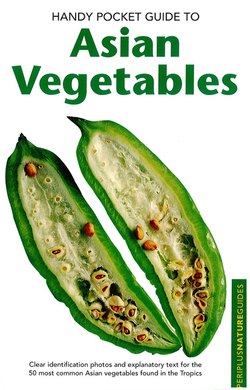Читать книгу Handy Pocket Guide to Asian Vegetables - Wendy Hutton - Страница 4
На сайте Литреса книга снята с продажи.
ОглавлениеIntroduction
One of the most striking aspects of markets throughout tropical Asia is the vast array of vegetables on display: bulging beige, white, purple or pink roots, tubers and stems; round, oval or snake-shaped gourds; dozens of vivid leafy greens, often glistening with the water sprinkled on to keep them fresh; tubs of crisp beansprouts and piles of bamboo shoots; forest-fragrant mushrooms and bunches of aromatic greens; mountains of fiery chillies and even edible flowers.
Some of the vegetables enjoyed in Southeast Asia are rarely seen in markets, as they are gathered wild, plucked from the tips of trees, from alongside rivers or klongs, from the edges of rice fields or from the forests. Others are from kitchen gardens and are rarely grown commercially. As Asia becomes increasingly urban, the use of these wild vegetables is diminishing-as, indeed, is the prevalence of kitchen gardens-yet the markets offer more than enough to compensate for the lack of these traditional vegetables.
Many of tropical Asia's vegetables are native to the region. Countless others have been introduced from other continents and are now such an accepted part of the local diet that it's hard to imagine a time when they were not available. The most striking example is the chilli, a fiery little fruit unknown outside its native tropical America before the arrival of Columbus in the 15th century. Portuguese and Spanish colonialists carried the chilli to India and to the Philippines, from whence it spread like the proverbial wild fire.
This book serves as an introduction to some of the most common vegetables found in tropical Asian markets, and includes only those Western vegetables whose Asian counterparts are somewhat different. Most of the entries are lowland vegetables; others are cultivated in cooler highland areas or imported from China.
Local names usually differ from one country to the next; even within countries such as Indonesia, the Philippines and Thailand, the same vegetable may have different names according to the local dialect. The most accurate identification is the scientific name, although even here, botanists show a reluctance to let sleeping plants lie and sometimes reclassify a variety. This book gives the currently accepted botanical name, with older or alternative botanical names also provided where these may be useful. The most widespread local name is given for Thailand, Malaysia, Indonesia and the Philippines. The vegetables are grouped according to family, in alphabetical order. An index which includes their common and scientific names can be found at the back of the book.
Identifying vegetables is only the first step towards their enjoyment. Buying tips, storage and preparation are all discussed, as well as notes on the history, nutritional value and medicinal properties of certain vegetables. Finally, a few sample recipes from around the region are included to whet your appetite.
